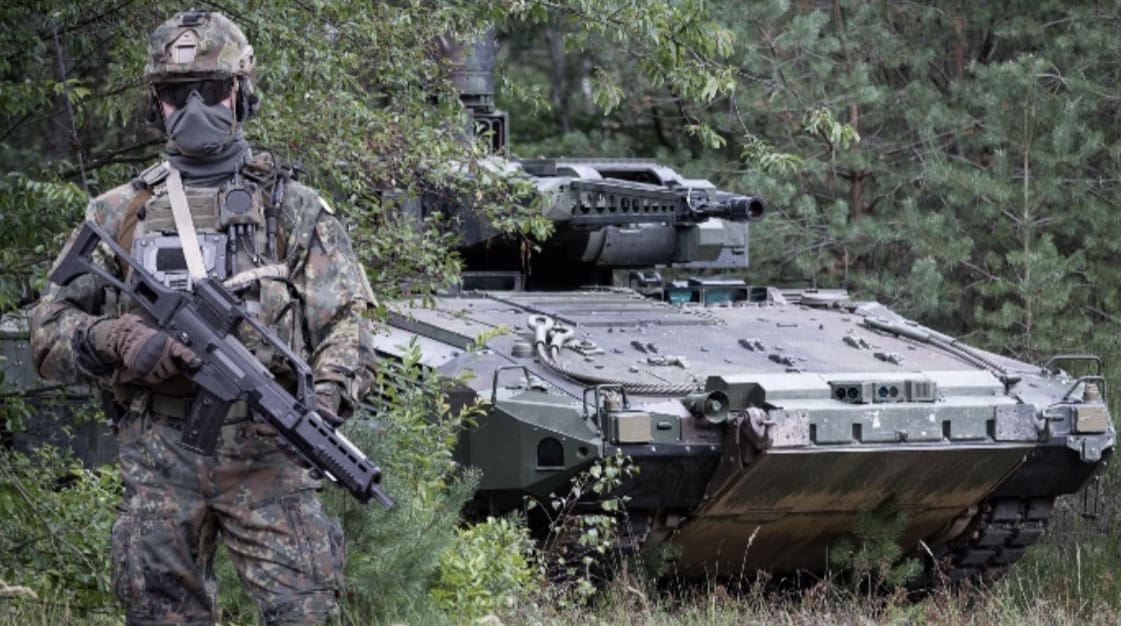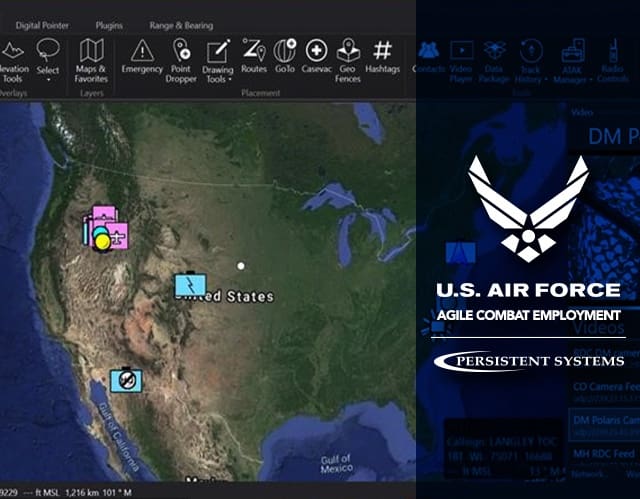May your son grow to be as mighty as his parents.
May your son grow to be as mighty as his parents.
It’s that time again, like a zombie, DiFi and her list for your Guns never goes away, she just keeps coming back for more. And by more, this time, she’s packed even more guns she wants to ban in her legislative agenda. She’s lost a lot of clout in the Democratic Party over the past few years so we’ll see how this goes for her. Democrats haven’t held all of the marbles since 2009 and Obamacare was their primary legislative agenda. She might just hit pay dirt this time.
The funny thing is, this has been going on for so long, she now looks better in our zombie image than she does in real life.
There once was a powerful zombie queen named Dianne. Dianne doesn’t seem like such a terrifying name and that’s probably why she went unnoticed as a zombie for so long. Don’t get me wrong. All of the signs that she was undead were there; the lifeless eyes, the gaunt white skin stretched taught over sharp cheekbones, the ridiculous bouffant wigs used to hide her balding pate and the lispy voice that turned the “s” at the end of a word into a “z”, like in “gunz” and “brainz”. All classic signs, and yet, we missed them all.

She had fooled her people for decades despite looking like the living dead when she ascended to her position, and yet not aging the entire time. Of course, the people she ruled were more concerned with good times and hand outs than protecting themselves.
Queen of the Damned Dianne knew that her kind would never take over so long as the living were armed. So for years and years she plotted and schemed. The path for her unholy horde was clear. Disarm the living and they would feast on brainz for breakfast, lunch and dinner. But how?
Finally, a tragedy struck and, relying on sentimentality, undead Dianne used her power to ramrod new laws through that would disarm the living. In a sense of guilt, the living were disarmed. Those who opposed this were labeled as kooks and crazies and led off as criminals.
Unfortunately, this isn’t a fairy tale with a happy ending. The zombies are at the door. First, they will eat your gunz and then they will come for your brainz. Stop Zombie Queen Dianne’s evil gun grabbing agenda and expose her for what she is. Unchecked, she will suck the life out of you, your family, and your neighbors.
We don’t often publish speculative fiction on SSD but we didn’t think this one could wait until Halloween.

RESEARCH TRIANGLE PARK, N.C. — Joint Army- and Air Force-funded researchers have taken a step toward building a fault-tolerant quantum computer, which could provide enhanced data processing capabilities.
Quantum computing has the potential to deliver new computing capabilities for how the Army plans to fight and win in what it calls multi-domain operations. It may also advance materials discovery, artificial intelligence, biochemical engineering and many other disciplines needed for the future military; however, because qubits, the fundamental building blocks of quantum computers, are intrinsically fragile, a longstanding barrier to quantum computing has been effective implementation of quantum error correction.
Researchers at University of Massachusetts Amherst, with funding from the Army Research Office and the Air Force Office of Scientific Research, identified a way to protect quantum information from a common error source in superconducting systems, one of the leading platforms for the realization of large-scale quantum computers. The research, published in Nature, realized a novel way for quantum errors to be spontaneously corrected.
ARO is an element of the U.S. Army Combat Capabilities Development Command, known as DEVCOM, Army Research Laboratory. AFOSR supports basic research for the Air Force and Space Force as part of the Air Force Research Laboratory.
“This is a very exciting accomplishment not only because of the fundamental error correction concept the team was able to demonstrate, but also because the results suggest this overall approach may amenable to implementations with high resource efficiency, said Dr. Sara Gamble, quantum information science program manager, ARO. “Efficiency is increasingly important as quantum computation systems grow in size to the scales we’ll need for Army relevant applications.”
Today’s computers are built with transistors representing classical bits, either a 1 or 0. Quantum computing is a new paradigm of computation using quantum bits or qubits, where quantum superposition and entanglement can be exploited for exponential gains in processing power.
Existing demonstrations of quantum error correction are active, meaning that they require periodically checking for errors and immediately fixing them. This demands hardware resources and thus hinders the scaling of quantum computers.
In contrast, the researchers’ experiment achieves passive quantum error correction by tailoring the friction or dissipation experienced by the qubit. Because friction is commonly considered the nemesis of quantum coherence, this result may appear surprising. The trick is that the dissipation has to be designed specifically in a quantum manner.
This general strategy has been known in theory for about two decades, but a practical way to obtain such dissipation and put it in use for quantum error correction has been a challenge.
“Demonstrating such non-traditional approaches will hopefully spur more clever ideas for overcoming some of the most challenging issues for quantum science,” said Dr. Grace Metcalfe, program officer for Quantum Information Science at AFOSR.
Looking forward, researchers said the implication is that there may be more avenues to protect qubits from errors and do so less expensively.
“Although our experiment is still a rather rudimentary demonstration, we have finally fulfilled this counterintuitive theoretical possibility of dissipative QEC,” said Dr. Chen Wang, University of Massachusetts Amherst physicist. “This experiment raises the outlook of potentially building a useful fault-tolerant quantum computer in the mid to long run.”
By U.S. Army DEVCOM Army Research Laboratory Public Affairs

OVERLAND PARK, Kan. – March 18, 2021 – Bushnell®, an industry leader in performance optics, is celebrating the 25th anniversary of the advent of the laser rangefinder for hunters this year. In 1996, Bushnell adapted the same technology used by NASA for space shuttle deployment and retrieval to bring the first consumer laser rangefinder to the hunting and shooting market, the Yardage Pro 400. This innovation triggered an optics revolution in the hunting and shooting world.
To celebrate 25 years of milestones and the company’s upcoming optics innovations, Bushnell will be hosting events, sharing stories, and giving away Bushnell products and gear throughout 2021. The first Anniversary of Accuracy Sweepstakes is now open for registration and will conclude on March 31st with 25 prizes being given away, including a Nitro 1800 laser rangefinder.
The introduction of the laser rangefinder put a level of accuracy into the hands of hunters and shooters that before was only possible in the military. Since then, the laser rangefinder has not only become an essential tool in every rifle and bow hunter’s pack, but it has ushered in a new era of long-range and precision rifle shooting.
Over the past two decades, Bushnell has been responsible for numerous innovations in the laser rangefinder space, including features like scan mode, near/far mode, Angle Range Compensation (ARC) technology and integrated ballistics, all of which have made hunters’ experience with laser rangefinders more intuitive and effective.
Today, Bushnell laser rangefinders are used by hunters and shooters worldwide. Some of Bushnell’s current hunting laser rangefinders include the Prime 1300, Prime 1700 and Nitro 1800, with additional new models scheduled to be announced later this year.
To learn more about Bushnell and how they are celebrating 25 years of the invention that reinvented hunting, follow Bushnell on Instagram and Facebook, or visit Bushnell.com/LRF25.
Due to current health and travel protocols, we have made the difficult decision to postpone Rampart Range Day 2021 until September 28th 2021.
Thank you for your understanding.
We hope to see you in the fall!
DETAILS ABOUT THE RESCHEDULE
• The event will proceed as normal, on the new date September 28th 2021
• We will automatically transfer your reservation to the new date. If you wish to withdraw your registration, please contact us at rangeday@rampartcorp.com
• If you have not yet registered for Range Day 2021 – register now! You do not need to re-register if you are signed up already and wish us to carry your reservation forward to the new date.
Supplied by Rheinmetall and its partner companies, the Bundeswehr’s System Panzergrenadier has reached an important milestone. On 18 March 2021, Lieutenant General Alfons Mais, the Chief of the German Army, declared the system fit to fight. He also recommended equipping NATO’s spearhead formation, the Very High Readiness Joint Task Force (VJTF) 2023, which the Bundeswehr will be furnishing, with the new system. In essence, System Panzergrenadier consists of an upgraded version of the Puma – the infantry fighting vehicle made by the Rheinmetall and Krauss-Maffei Wegmann joint venture PSM GmbH – and the VJTF2023 version of the Future Soldier – Expanded System (IdZ-ES) developed by Rheinmetall. Following extensive development and modification work, System Panzergrenadier underwent a three-week-long tactical evaluation at the Bergen major training area on the Lüneburg Heath in northern Germany in February 2021. It passed the test with flying colours.
System Panzergrenadier will substantially enhance the fighting strength and combat effectiveness of the VJTF 2023. Equipped with System Panzergrenadier, this formation will, for the first time in Germany, bring together a digitized vehicle platform – the enhanced VJTF version of the Puma infantry fighting vehicle – and a soldier system equipped for digital radio communication.

System Panzergrenadier offers two key advantages: first, all soldiers, whether mounted or dismounted, can access the same information; and second, they are able to share this information with greater precision, more quickly and more robustly. The closely knit network of sensors and effectors belonging to the soldiers and their infantry fighting vehicle minimizes the time between target detection and target engagement. This blending of capabilities into a single overarching system enables more effective tactical interaction of the soldiers and their IFV, enhancing in turn the overall combat effectiveness of mechanized infantry units.
A total of forty VJTF-grade Puma infantry fighting vehicles will form part of the VJTF 2023 panoply of equipment. The most advanced version of the Puma to date, it includes, among other things, integration of standoff-capable effectors like the MELLS multirole lightweight guided missile system; additional sensors such as a new driver vision system; and improved C4I architecture.
The new panoramic and driver vision system heralds the end of the periscope era. For the first time, the entire crew will be able to “see through” the armour, both day and night. The fusion mode combines daylight vision with high-performance thermal imaging, enabling swift detection of concealed targets around the clock. The Puma is the first significant Western combat vehicle to include a system like this as a standard feature.
Now that the Puma IFV has been declared fit to fight, the German Army’s Mechanized Infantry Corps finds itself on the threshold of a new era, with the prospect of the remaining battalions also being equipped with a comparable revamped version of the Puma.
Embodying a systemic approach to reequipping vehicle platforms and soldier systems, System Panzergrenadier forms a sound foundation for conceptualizing and kitting out larger coherent systems of systems. Looking ahead, System Panzergrenadier thus becomes the basis for digitally networked and directed formations. Given the substantial increase in experience and capabilities in the field of IT system integration, this path provides a powerful impetus for future projects. In the consortium cofounded with PSM GmbH, Rheinmetall Electronics GmbH is responsible for the command capabilities workshare, and thus for assuring cross-platform networking of the system of systems.
Furthermore, System Panzergrenadier is stimulating further development beyond the immediate project. The next generation of the IdZ-ES is already in the starting blocks, while the new Puma VJTF infantry fighting vehicle offers an excellent point of departure for expanded capabilities, e.g., in the sensor-to-shooter category.
System Panzergrenadier is a technological trailblazer whose continued development is poised to deliver new capabilities for the German Army’s Division 2027 and Digitized Land-Based Operations system, the D-LBO.

Company’s mobile ad hoc network enables capabilities necessary to establish and operate small, rapidly deployable air bases in geographically dispersed areas, during conflict with near-peer power.
NEW YORK, N.Y. – Persistent Systems, LLC (“Persistent”) announced today that its Wave Relay® mobile ad hoc networking (MANET) technology successfully supported the U.S. Air Force’s demonstration of its Agile Combat Employment (ACE) concept.
ACE seeks to counter the threat near-peer powers like China and Russia pose to American force projection by shifting from large, established air bases to smaller, rapidly deployable, temporary airstrips manned by skeleton crews.
“Normally, you would have hundreds of people on a large Air Force base to support a squadron of fighter jets,” said Todd Grant, Persistent’s Director of Business Development for the Air Force and C4ISR. “With ACE, you get the same capability from a smaller, harder-to-target footprint that moves.”
To accomplish this, the U.S. Air Force requires a highly versatile and mobile command-and-control network that can tie together the core elements a combat wing required to plan missions, maintain jets, put them in the air, and defend the airstrip. An additional goal is to minimize the cost by leveraging existing Air Force assets, such as legacy radios, computer servers, and satellite terminals.
“That’s what we have shown with our Wave Relay® MANET during this recent demonstration,” said Adrien Robenhymer, Persistent’s VP for Business Development for Air Force, Intelligence Community, and Department of Energy Programs. “We connected geographically dispersed units at different military bases, providing users with direct communication, situational awareness, full motion video, and audio.”
The demonstration proved that the Air Force has the networking capability to support expeditionary air bases in an A2AD environment while saving hundreds of millions of dollars.
Persistent also demonstrated automated PACE (Primary, Alternate, Contingency, and Emergency) communications via satellite, internet, and 5G cellular, as well as by local area network for conditions when a beyond-line-of-sight capability is not available.
“In a world where technologies increasingly depend upon Cloud Computing availability, Persistent’s Base Defense and Missile Field Solutions can operate completely standalone when the Cloud is not available, enabling operation in a ‘CloudNONE’ scenario,” said Robenhymer.
But the implications of the ACE demonstration are even greater than that.
“The interoperability lessons that were learned here flow into the Advanced Battle Management System, the Air Force’s multi-billion-dollar effort to connect computers, sensors and shooters at machine-speed, in keeping with the U.S. Department of Defense’s vision of Joint All Domain Command and Control,” he said.
The next step, Persistent officials say, is to take the real-life capabilities shown with ACE and merge them with future Advanced Battle Management System work.